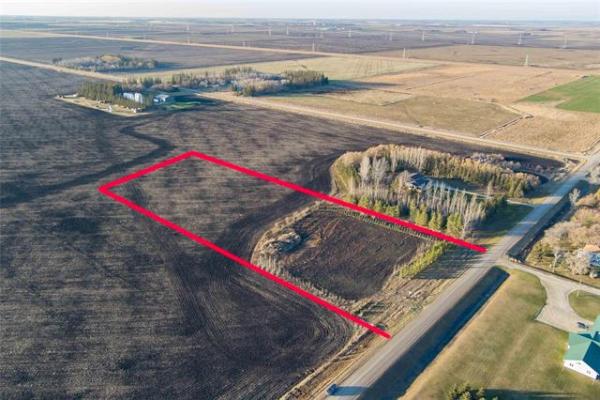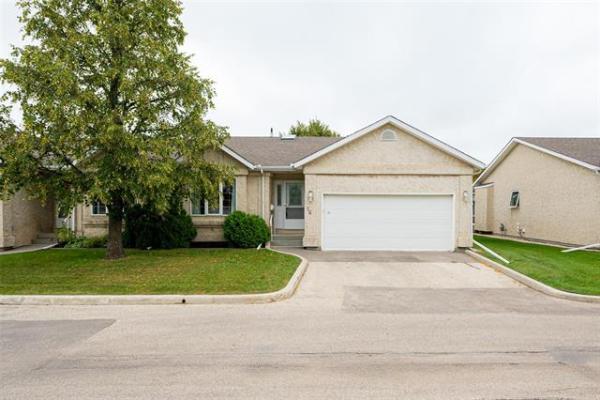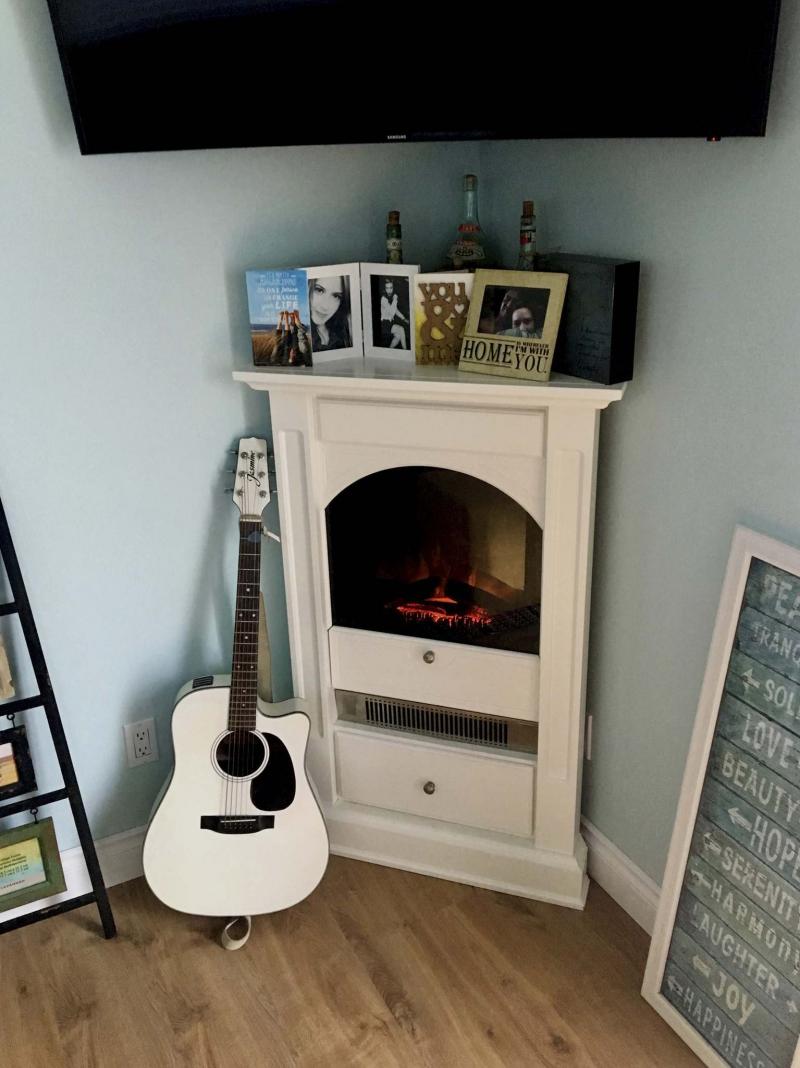
Marc LaBossiere / Winnipeg Free Press
This electric fireplace quickly heats up a room on a cold winter night.
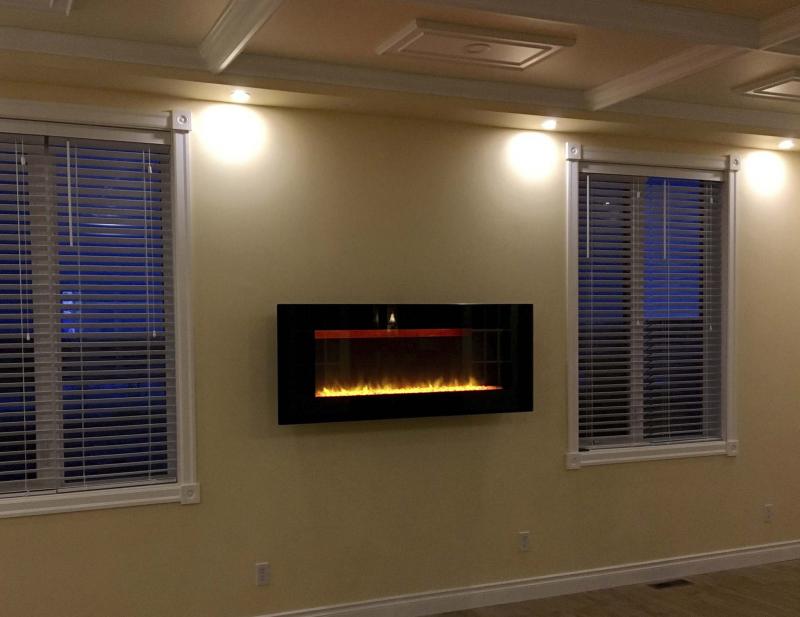
the five-foot, 120v, 15-amp wall-mount electric fireplace in Marc’s new step-down dining room is plugged into a hidden outlet wired with 12-gauge three-wire on a 20-amp double-breaker which can handle up to 240v, 20 amps (if an upgrade is so desired in future)
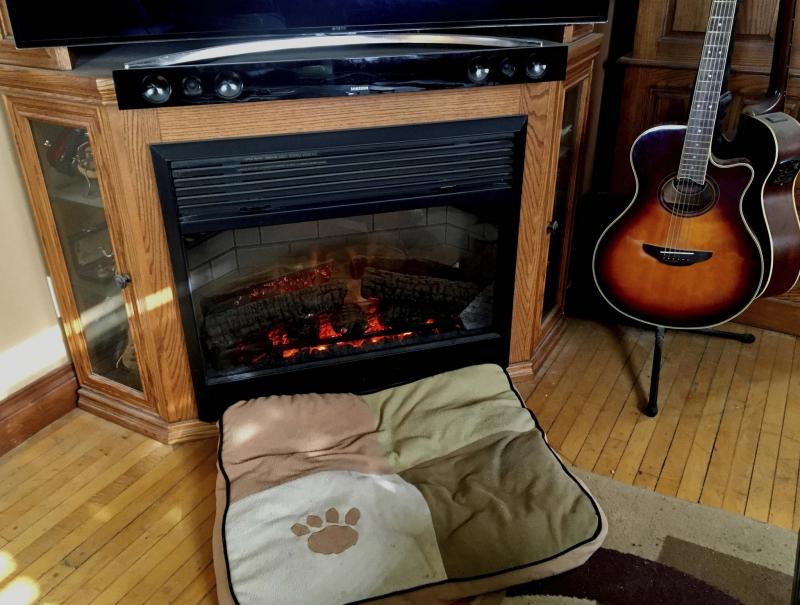
Marc LaBossiere / Winnipeg Free Press
This electric fireplace has a built-in temperature sensor, which automatically turns on the heat if the room gets too cold.
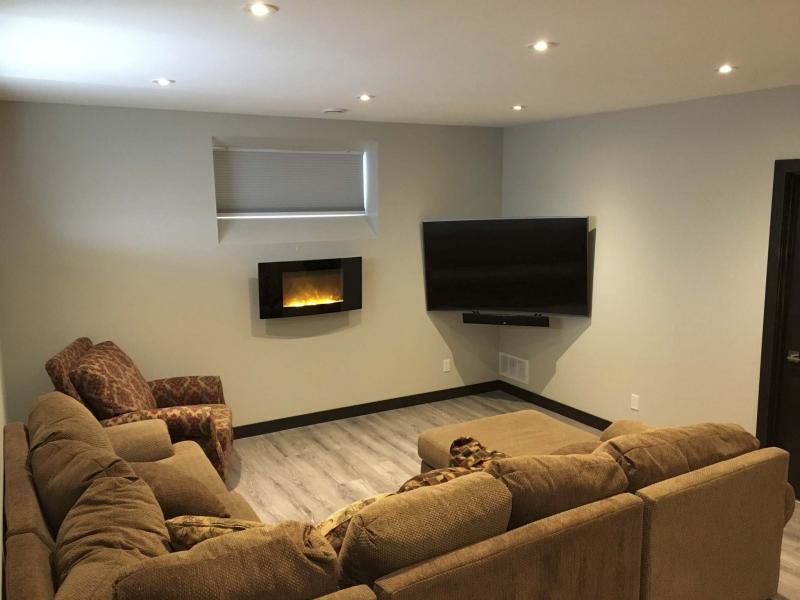
Marc LaBossiere / Winnipeg Free Press
Installing this fireplace required some reworking of the wall outlet and the unit cord.
The faux fireplace has sure come a long way. As a child, the working fireplace in the living room of our house had been converted to a decorative fireplace, which basically meant the chores of hauling logs, keeping the chimney flue clean, and ensuring smoke wouldn’t fill the room were replaced with the act of flipping a switch to turn on a tacky orange light behind decorative logs set inside a brass base. And, although many old fauxs could also provide heat, today’s electric fireplace has much more to offer.
There are a few things to consider when deciding whether an electrical fireplace is the solution that will best suit your needs: wall-mount or insert, with or without heat, hardwired or a plug, and 120v or 240v capabilities. In my home, there are three electric fireplaces; two are inserts, and the third is a wall-mount I recently hung in the new step-down dining room.
An insert electric fireplace is one that fits into a cavity of an existing fireplace, called the firebox opening. It is also often found at the base of an entertainment wall unit, or stand-alone faux fireplace unit. Often, if the insert has been purchased separately, it must then be hardwired. As such, it is necessary to ensure the proper wiring leads to a junction box within the cavity, so that the electric fireplace can be safely tied in. Most inserts are designated 15 amps, which basically means that standard 14-gauge wiring in your home will suffice. It is important to ensure that this is a dedicated circuit, because the fireplace will likely draw close to 15 amps on its own. If other loads are on this circuit, the breaker may trip often. If the insert is a 120v system, then common wiring is required; the black wire (hot) is connected to the black if the insert, the white wire (neutral) is connected to the white, and the insert is then grounded with the bare or green wire. If, however, the insert offers a 240v option, this requires a three-wire hook-up, a third wire (usually red) which must be connected to the red wire of the insert. A 240v system can offer greater heating capabilities but draws more power. As such, a double 15-amp breaker is required at the electrical panel, whereby the "black" hot and "red" hot are on individual breaker leads. In either system, the "white" neutral is required to run the electronics which provide the variety of esthetic and heating options offered by each individual electric fireplace unit.
My first electric fireplace was the one still located in my living room. It is an insert mounted within my corner entertainment unit, which also houses my big-screen curve TV above it. This insert came with the entertainment unit when it was purchased, and simply requires a standard plug. As such, it is a 120v system, which draws less than 15 amps. I believe it is rated at 12 amps — so I try to limit the draw on that circuit by excluding other loads... haven’t tripped a breaker yet while using it on full. This insert also came with a hand-held remote control, with temperature sensor. If turned on, the sensor on the remote is set to activate the heater of the insert only when the local temperature dips below a preset. This has proven highly convenient when sitting in front of the TV and the room feels chilly. The esthetics of the faux flames are also very pleasing to the eye, whether the heat is on or not.
The second electric fireplace is found in my bedroom. It is a nice decorative corner unit that resembles a miniature fireplace with mantle. It was purchased as a stand-alone unit, and also requires a standard plug. Again, this insert only draws 12 amps, and the breaker has never been tripped. The faux flames and decorative logs seem realistic. Unlike the larger insert on the main floor however, the heater comes on automatically when the insert unit is turned on. During the winter months, it quickly heats up the bedroom to a comfortable temperature, just before the sandman arrives.
The remaining electric fireplace is the wall-mount recently hung in the new step-down dining room. Because I was introducing several new circuits within that space during the build, choosing how and where to do so for a wall-mount fireplace was completely under my control. This five-foot-wide wall-mount has a plug and requires an outlet. In the spirit of clean lines and hiding cables, precise measurements were taken to place an outlet on the wall in such a way that it would be hidden from view once the fireplace was mounted. Because this 120v unit draws up to a full 15 amps, I elected to run 12-gauge wire to provide some load buffer. I also ran it as three-wire, although the unit only requires a standard two-wire outlet. By enhancing the wiring requirements from the onset, it allows me to easily upgrade my wall-mount to a 240v unit in future, that can draw more than 15 amps. For now, this five-foot decorative wall-mount fireplace is a beautiful addition to my spacious step-down dining room that provides a wonderful dining experience for any occasion.
I’d recently added an insert electric fireplace for longtime clients Lynn and Gene Lakusiak. Their old faux fireplace had seen better days. The new insert was ordered to fit within the existing firebox cavity dimension specifications. This unit called for a 240v, 15-amp hardwired system which requires 14-gauge three-wire at the junction box. Unfortunately, the Lakusiaks’ home had been rewired improperly at some point in the past and although there were three wires withing a junction box in the firebox cavity, only two were deemed active. Therefore, we decided upon the 120v option, which essentially provides everything the fireplace has to offer... at half the heating capabilities. Because the Lakusiaks’ main objective was esthetic, their new electric fireplace unit was more than sufficient.
A smaller wall-mount unit introduced at another client’s house created an unforeseen challenge. Don Kennedy wanted a wall-mount unit hung below a window next to his flat-screen TV in the rec-room area of his lower level, which I had completed for him a while back. Although I had anticipated this and positioned an outlet in such a manner as to hide any electrical cables from an impending wall-mount, the fireplace, when plugged in, would not sit flush against the wall because the back of the unit crept over the outlet location when centred below the window. To fix this, two steps were taken. The first was to remove the existing outlet and replace it with a sunken outlet (where the outlet is part of the cover plate itself, and sits an inch into the outlet box), and the second step required that the plug end of the unit be replaced with a 90-degree angled plug. Once both steps were achieved, the plug sat within the outlet almost perfectly flush with the wall, allowing for the fireplace unit to be secured to the wall as desired, centred below the window above. A beautiful finishingtouch to this nearly fully populated rec-room space.
The electric fireplace of today is a testament to when esthetics and functionality serve a dual purpose in tandem, and the results can be extremely gratifying. Whether you wish to heat a chilly space in a decorative manner, or simply beautify an existing room with the bonus ability to provide heat if and when needed, the electric fireplace is a cost-effective way to achieve either primary objective. The realistic flames can be hypnotic, and nothing beats the soothing heat when you feel chilly. The only thing missing is the crackling of an actual fire — a feature we may encounter in the next generation of electric fireplaces. Until then, a "two-senses" enjoyment is good enough for me.
bossenterprise@outlook.com

